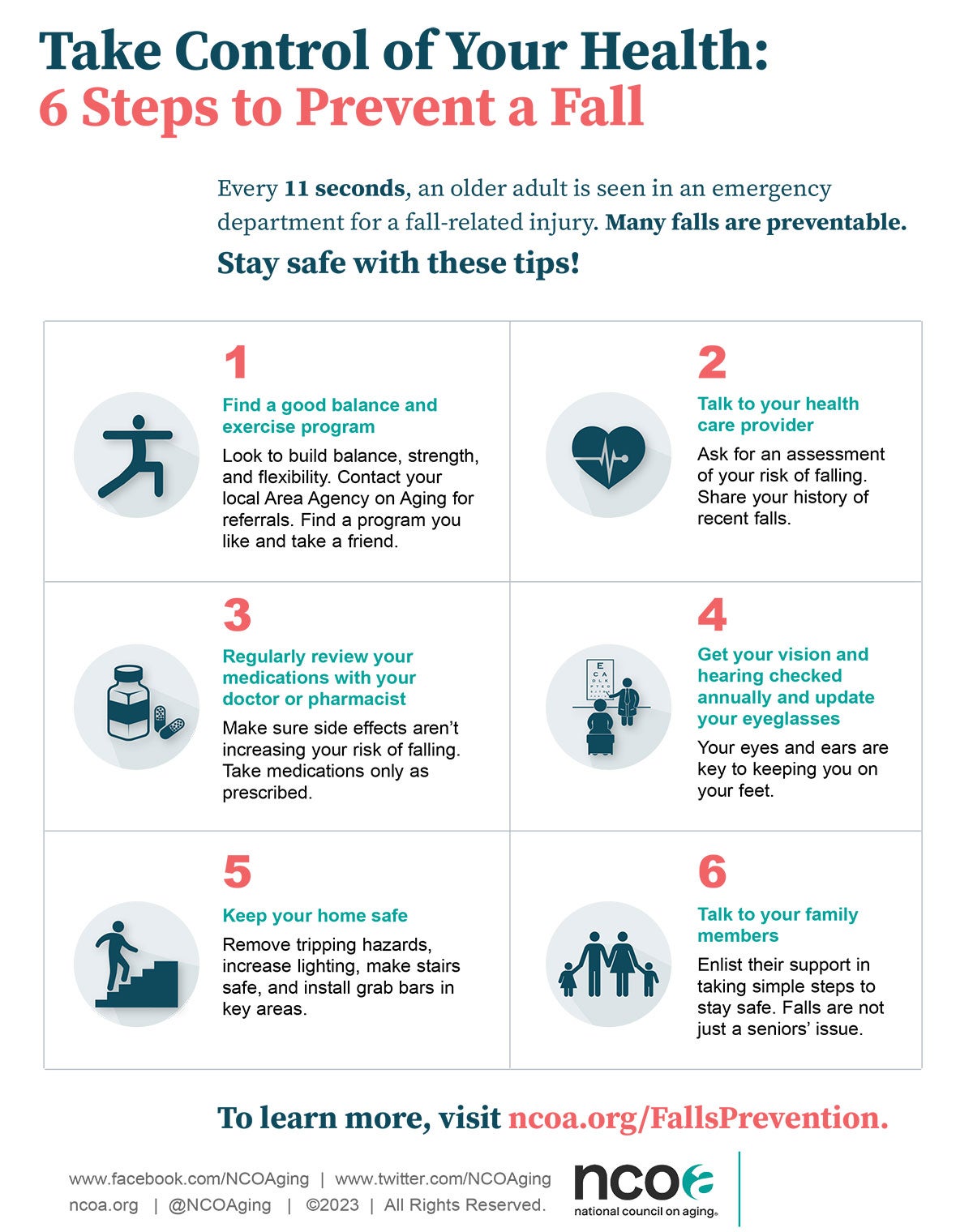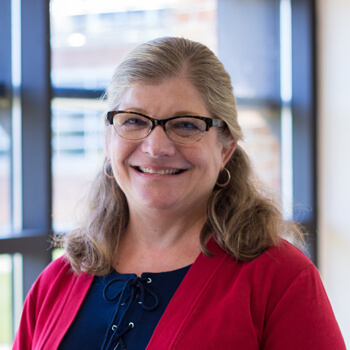CUW’s Physical Therapy department talks about what you can do to help prevent falls this coming winter season.
As a practicing Physical Therapist for over forty years, who has been specializing in working with older adults for the past ten + years, accenting the importance of Falls Prevention comes natural to me. The week of September 18th-22nd is National Falls Prevention Awareness Week. In 2020 this expanded from a day to an entire week. According to the National Council on Aging (NCOA), on the first day of fall, their focus is to bring awareness to fall prevention initiatives for older adults throughout the country. To increase your awareness, I would like to share some facts and some helpful tips with you.
Facts about falls:
Falls are the leading cause of fatal and non-fatal injuries among older adults that can result in serious injuries as well as increase the risk of additional falls. Falls Prevention programs are effective in saving lives, money and helping older adults remain independent and active members within their community.
Falls are NOT a normal part of aging.
For years NCOA has been committed to focusing on helping older adults improve their confidence and skills to prevent a fall. Fall Prevention requires a team effort. The following individuals are members of this team, and each role is important in reducing the risk of falls.
Family and friends:
- Can provide another set of eyes to assist with clearing fall hazards within your home.
- Can join you at your Dr. appointment and assist in asking questions and additional information on preventing falls.
An Occupational Therapist (OT):
- They will identify hazards to be eliminated or modified to prevent falls within your home environment.
- They recommend assistive devices to fit your needs to ensure additional safety and independence.
A Primary Care Physician (PCP):
- Important healthcare team member to begin the screening process of fall prevention due to seeing you regularly.
- Member of the healthcare team that knows your medical history and can address and refer you to other medical professionals/team members to assist in the process of fall prevention.
A Pharmacist:
They are a vital team member of any Fall’s Prevention program. Why?
- Most adults take medication or supplements daily.
- Pharmacists will screen for medications that place an older adult at higher risk for falls.
- Consult with your pharmacist about any new medication that you are taking or any side-effects you may be experiencing.
A Physical Therapist (PT):
What is a PT? They are movement specialists that assist in identifying impairments contributing to falls. They can:
- Prescribe exercises and activities to improve balance, strength, and mobility to prevent falls.
- Provide resources on evidence-based community programs to maintain and or improve strength and balance.
These community programs might be found at…
Your local fire department:
- Offer home safety checks to spot hazards such as rugs without non-slip backing, too many electrical devices plugged into one outlet, and assist in testing and replacing smoke alarms.
Your hardware stores:
- A place to purchase supplies and materials to make your home a safer place to age in place and remain independent.
- Some of these items may include grab bars, a hand-held shower head, nightlights, and brighter lightbulbs as well as non-slip pads for your rugs.
Your faith-based organization(s):
- Individuals that can support you through encouragement and social support.
- Provide additional community resources such as providing transportation to medical visits, exercise classes, and or activities related to falls prevention.
Your library:
- Valuable place within your community to access information about falls prevention.
- Often a common place for falls prevention programming.
Your local sporting goods store:
- Provide the proper shoes and clothing as well as equipment to stay active and safe.
- Assist in obtaining the proper equipment for health and fitness programs such as yoga mats, ankle weights, dumbbells, water bottles, walking sticks and more.

Additional Sources
1. Facts About Falls. Centers for Disease Control and Prevention. Injury Prevention and Control. Found on the internet at https://www.cdc.gov/falls/facts.html
2. Carande-Kulis, V., Stevens, J., Florence, C., Beattie, B.L., Arias, I. (2015). A cost-benefit analysis of three older adult falls prevention interventions. Journal of Safety Research, 52, 65–70. Found on the internet at https://pubmed.ncbi.nlm.nih.gov/25662884/
3. Report to Congress in November 2013: The Centers for Medicare & Medicaid Services’ Evaluation of Community-based Wellness and Prevention Programs under Section 4202 (b) of the Affordable Care Act. Found on the internet at http://innovation.cms.gov/Files/reports/CommunityWellnessRTC.pdf
4. Ackermann RT, Williams B, Nguyen HQ, Berke EM, Maciejewski ML, LoGerfo JP. Healthcare cost differences with participation in a community-based group physical activity benefit for Medicare managed care health plan members. J Am Geriatr Soc. 2008 Aug;56(8):1459-65. doi: 10.1111/j.1532-5415.2008.01804.x. Found on the internet at https://www.sciencedirect.com/science/article/pii/S1551714414000330
Ayelet Dunsky. The Effect of Balance and Coordination Exercises on Quality of Life in Older Adults: A Mini-Review. 2019. https://www.frontiersin.org/articles/10.3389/fnagi.2019.00318/full
Falls Prevention Awareness Week is made possible in part by grant number 90FPSG0051 from the U.S. Administration for Community Living, Department of Health and Human Services, Washington, D.20201. Points of view or opinions do not, therefore, necessarily represent official Administration for Community Living policy.

My clinical practice spans over forty years, with experience in all aspects of acute care and outpatient physical therapy. My areas of expertise are in the physical therapy management of the geriatric patients with special interest in working with the individual with Parkinson Disease. I am a Board Certified Geriatric Clinical Specialist. I recently applied for re-certification which is good for an additional 10 years